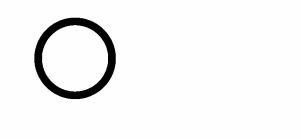Current Schedule
In the winter term of 2001/2002 the following talks will be organized by our Institute. The talks are partially financed by the "Arbeitskreis Graphische Datenverarbeitung" of the OCG (Austrian Computer Society)
| Date | Speaker | Title | Time | Location |
| 14.9.2001 | Stefan Schlechtweg (Otto-von-Guericke-University Magdeburg) | Nicht-photorealistische Computergraphik | 14.00-15.00 s.t. | Seminarraum 186, Favoritenstraße 9, 5. Stock |
| 1.10.2001 | Francisco Rodriguez (3D-Matic Research Laboratory, Department of Computing Science, University of Glasgow) | Reconstruction based on stereovision: correspondence, registration and integration | 14.00-15.00 s.t. | Seminarraum 186, Favoritenstraße 9, 5. Stock |
| 30.10.2001 | Damian Green (Multimedia Research Group, Brunel University) | Real Time Visualisation of Stratigraphy For Archaeological Investigation | 11.00-12.00 s.t. | Seminarraum 186, Favoritenstraße 9, 5. Stock |
| 23.11.2001 | Kevin Taylor and Emília Mironovová | Using Technical English as a Basis for International Collaboration | 11.00-11.45 s.t. | Seminarraum 186, Favoritenstraße 9, 5. Stock |
Previous Schedules
- Colloquy Cycle SS01
- Colloquy Cycle WS00/01
- Colloquy Cycle SS00
- Colloquy Cycle WS99/00
- Colloquy Cycle SS99
- Colloquy Cycle WS98/99
- Colloquy Cycle SS98
- Colloquy Cycle WS97/98
- Colloquy Cycle SS97
- Colloquy Cycle WS96/97
Nicht-photorealistische Computergraphik
Stefan Schlechtweg, Otto-von-Guericke-University Magdeburg
In den letzten Jahren hat sich das nicht-photorealistische Rendering (NPR) als interessanter neuer Zweig der Computergraphik entwickelt. Ziel der NPR-Methoden ist es, unterschiedliche Darstellungsstile mit computergraphischen Methoden zu generieren, die von den bisherigen photorealistischen Graphiken abweichen. Die Anwendungsgebiete nicht-photorealistischer Bilder sind dabei sehr weitreichend - vom Einsatz als Illustrationen in Handbüchern über ästhetisch ansprechende Graphiken und Animationen bis hin zu Echtzeitgraphiken in Spielen. Der Vortrag gibt einen Überblick über die wichtigsten Methoden zum Erzeugen von NPR-Graphiken und versucht, Möglichkeiten der Anwendung aufzuzeigen.
Real Time Visualisation of Stratigraphy For Archaeological Investigation
Damian Green, Multimedia Research Group, Brunel University
During an archaeological dig, a great deal of data relating to stratigraphic positioning (SP) is recorded. This data is recorded in a variety of different formats, individual excavation logbooks, stratigraphy forms, and in theodolites. The widely used archaeological practice of analysis and representation of SP is the Harris Matrix approach [Harri89]. This is a valuable technique to analyse and compare 2D SP data, now with the advent of cheap and powerful 3D computing, there is a growing need for the archaeologist on site to test hypotheses and gain immediate results. The 3D representation and analysis of this SP data, with the ability to perform real-time hypotheses without prolonged sifting through hard copies of excavation logbooks presents a real innovation to future archaeological interpretation. The ability to replay the excavation in a timely order, stratum by stratum after it has been allows both the casual user and the specialist archaeologist insight previously not possible.
Using Technical English as a Basis for International Collaboration
Kevin Taylor, Purdue University at Kokomo, and Emília Mironovová, Slovak University of Technology
As we continue to merge global markets it is inevitable that many of today s graduates will participate in international activities when they enter the workforce. It is imperative that we prepare our students for this global work environment. Described is a project between students in the United States and the Slovak Republic aimed at improving both technical communications and cultural understanding between the two groups. The students in the United States were seniors in a two-semester capstone design sequence in Electrical Engineering Technology (EET) at Purdue University. The Slovak students were Ph.D. candidates from the Faculty of Materials Science at the Slovak University of Technology (SUT) studying Material Science, Plant Management, Automation and Control, and Machine Technolo gies. The SUT students were enrolled in a course entitled "English for Specific Purposes", allowing all communications to be in English. The students were paired and exchanged biographies, resumes (CVs) and technical works such as design proposals and research abstracts. Internet cameras purchased using funds from a grant facilitated on-line meetings throughout the year long project. Since the two groups were from different disciplines, clear English communication was a necessity. By reviewing the material written by the SUT students, the EET students became sensitized to the problems caused by their own use of idiomatic phrases and incomplete descriptions. The SUT students benefited by practicing reading, writing and speaking in English through their correspondence and online meetings with the EET students. Both groups reviewed technical English written by peers including flaws and idiomatic expressions. The primary advantage of this collaboration is that it is not constrained by curricular discipline , making it easily adaptable by other disciplines. A secondary advantage is that the students gain international experience while avoiding the travel expense.